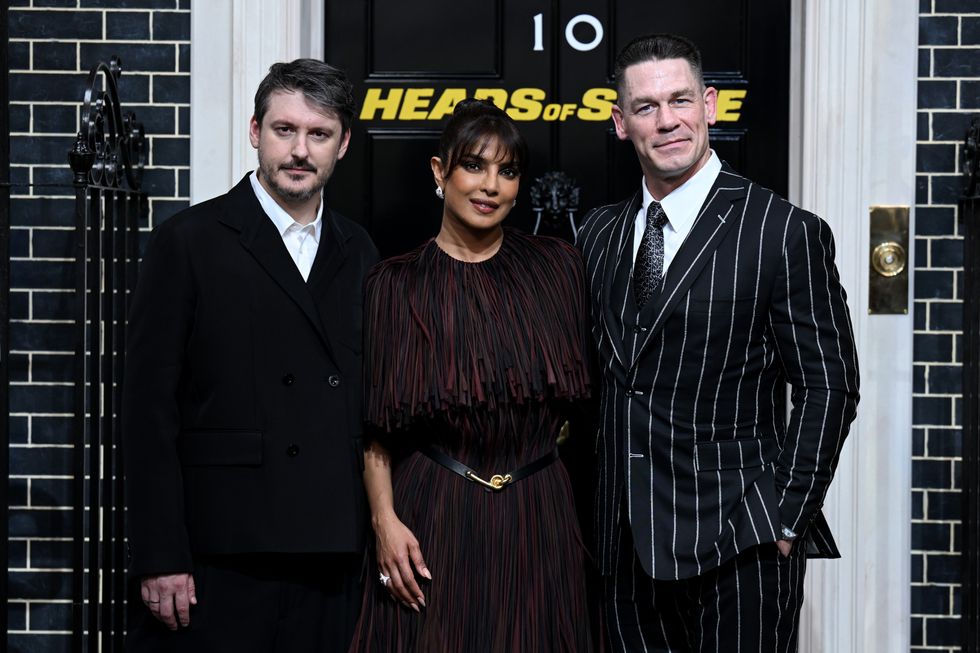THE Royal Horticultural Society (RHS) recognises that it has become difficult for young people to own their own homes – which is why it is holding a show devoted to indoor plants.
Those with access to outdoor gardens during the pandemic lockdowns were lucky, but others who own or rent apartments can also enjoy a touch of greenery in their living environments.
The RHS points out: “Even if you don’t have an outdoor space, you can still enjoy gardening. Growing indoors opens up new opportunities for exotic or tender plants, and houseplants can bring health benefits.
“From beautiful contemporary hanging displays to traditional terracotta pots, there are hundreds of inventive ways to grow and display houseplants.”
The RHS has announced plans to hold a new urban show in Central Manchester. From April 18-21, 2024, the RHS will transform the city’s historic former railway station, Depot Mayfield, into an urban grower’s paradise. It will be full of small space gardening inspiration to encourage and inspire city dwellers to grow plants for both their indoor and outside spaces.
The Manchester event will be different to the RHS’s current roster of flower shows, with an industrial, indoor, city centre location and immersive experience designed for those who live in cities with limited or no outdoor growing space.

While urban growing will be at the heart of the show, the influence horticulture has on interior design, art, wellness and sustainability will also be explored. There will be innovative gardening features with design inspiration for small city spaces – such as vertical gardening and urban farming – along with immersive plant installations, a host of talks, advice and practical workshops, as well as a curated selection of plant nurseries selling a variety of houseplants and small-space-friendly plants.
Helena Pettit, the director of gardens and shows at RHS, said: “In recent years there’s been a real gardening boom, and we believe more young people living in cities are now growing plants.
“So, we are so excited to be bringing a new RHS show dedicated to urban gardening to the centre of Manchester next year. The RHS urban show aims to bring gardening to a new audience and demonstrate that if you have plants, you are a gardener.
“There is so much great work already happening across the city to make it greener, and we are excited to help support this growing movement. We want to get even more people living in the UK’s second largest city inspired to grow plants and connect to the natural world. With over 80 per cent of the UK population living in towns and cities, the new show will enable more urban dwellers to garden, especially where access to green spaces can be limited.”
As part of the RHS strategy to 2030 launched earlier this year, “one priority is to open up gardening for anyone, anywhere. The new RHS urban show is one of the ways in which the RHS hopes to do this.”
Among British Asians there has been an interest in gardening, but this appears to have gone up since the RHS and Eastern Eye collaborated to show a “garden of unity” at the Chelsea Flower Show in May this year.
According to one newspaper report, “houseplants aren’t just a way to make your home look better. A science paper makes the point that some of the most popular pot plants can also have a positive impact on the quality of the air”. Research by the University of Birmingham and the RHS found that in a small, poorly ventilated office measuring about 15 cubic metres, just five small plants reduced levels of the common air pollutant nitrogen dioxide by as much as 20 per cent.
The researchers tested low-maintenance, inexpensive houseplants that are commonly found in UK homes – the peace lily (Spathiphyllum wallisii), corn plant (Dracaena fragrans) and ZZ plant (Zamioculcas zamiifolia) – by putting them into test chambers containing levels of NO2 [nitrogen dioxide] comparable to those in an office next to a busy road. An hour later, each species of plant had removed about half the NO2 in its chamber.
Exposure to high concentrations of NO2, which gets into the air when fossil fuels are burned, can aggravate respiratory diseases, particularly asthma.
Jane Perrone, an expert who presents the houseplant podcast On the Ledge, said: “Those plants are all easy to look after, although the peace lily will wilt dramatically if it doesn’t have enough water. I often give the ZZ plant to people who claim they kill plants because it is super tough and adaptable to different conditions. So that’s a good one to choose if you are starting out.”
Perrone said a lot of people buy their houseplants from supermarkets or the big box DIY stores because they tend to be cheapest there.
But this is a false economy, she said, because people could end up with a plant that hasn’t been looked after particularly well and wasn’t worth buying. “If a plant has been sitting around for a while, sometimes it could be already stressed and damaged. So when you get it home, it starts to show signs of that stress.”
She suggests it is best to buy from a more specialist grower, such as a houseplant shop or a garden centre, “where there’s actually somebody who’s paid to look after the houseplants while they’re sitting there”.
Online specialist plant shops that provide lots of detailed information about what they are selling and their living requirements are also worth considering, she added, although “a lot is dependent on the packaging and the courier the website uses”.
Perrone said many people who struggle to keep their plants alive often massively underestimate how much light all plants need: “No plant is going to be happy long term in the darkest corner of the room.”
When people first take a plant home, they must bear in mind that even if it is a variety that can thrive in the shade, it may struggle at first in a dark spot if it has become accustomed to sunnier conditions.
“Don’t think you can bring a plant home, put it on a shelf and not look at it for a month. If you’re new to houseplants, observation is really key,” Perrone said.
People may need to move plants around in different seasons or repot them as they grow, so while it’s worth investing in the plant itself, they should avoid spending a fortune on beautiful ceramic pots.
“They’re always the wrong size for the next plant you get. I buy all my pots in charity shops and repurpose things like salad bowls and casserole dishes,” she said.
When choosing a plant in person, avoid those which have yellow or brown leaves and possible, take the plant out of its pot and sneak a peek at its roots, the RHS horticulture expert, Leigh Hunt, said.
“What you’re looking for, outside the root ball, is a little trail of small white roots. That would indicate it’s nice and healthy,” he said. “If it’s been overwatered, those roots will be rotten and brown.”
Too much watering – or too little – are problems that many houseplant killers have to overcome.
“People often ask, ‘how many times a week should I water?’” Hunt said. “And it’s really impossible to say because every plant is different – it grows at different rates, in different temperatures, light conditions and seasons … My general advice is push your finger into the compost. If that feels moist, or indeed wet, then don’t water it. If it starts to feel slightly dry, water it well.”







 Priyanka Chopra calls herself nascent in Hollywood as 'Heads of State' streams on Prime VideoGetty Images
Priyanka Chopra calls herself nascent in Hollywood as 'Heads of State' streams on Prime VideoGetty Images  Priyanka Chopra wants to build her English film portfolio after Bollywood successGetty Images
Priyanka Chopra wants to build her English film portfolio after Bollywood successGetty Images  Ilya Naishuller, Priyanka Chopra and John Cena attend the special screening for "Head of State" Getty Images
Ilya Naishuller, Priyanka Chopra and John Cena attend the special screening for "Head of State" Getty Images








 Arijit Singh performing Instagram/
Arijit Singh performing Instagram/ Arijit Singh clicked during a performance Getty Images
Arijit Singh clicked during a performance Getty Images 


 Liam Gallagher accepts Oasis' award for 'Best Album of 30 Years' Getty Images
Liam Gallagher accepts Oasis' award for 'Best Album of 30 Years' Getty Images  Liam Gallagher plays to a sell out crowd at the Universal AmphitheatreGetty Images
Liam Gallagher plays to a sell out crowd at the Universal AmphitheatreGetty Images Liam and Noel Gallagher perform together in Cardiff for the first time since 2009 Instagram/oasis
Liam and Noel Gallagher perform together in Cardiff for the first time since 2009 Instagram/oasis